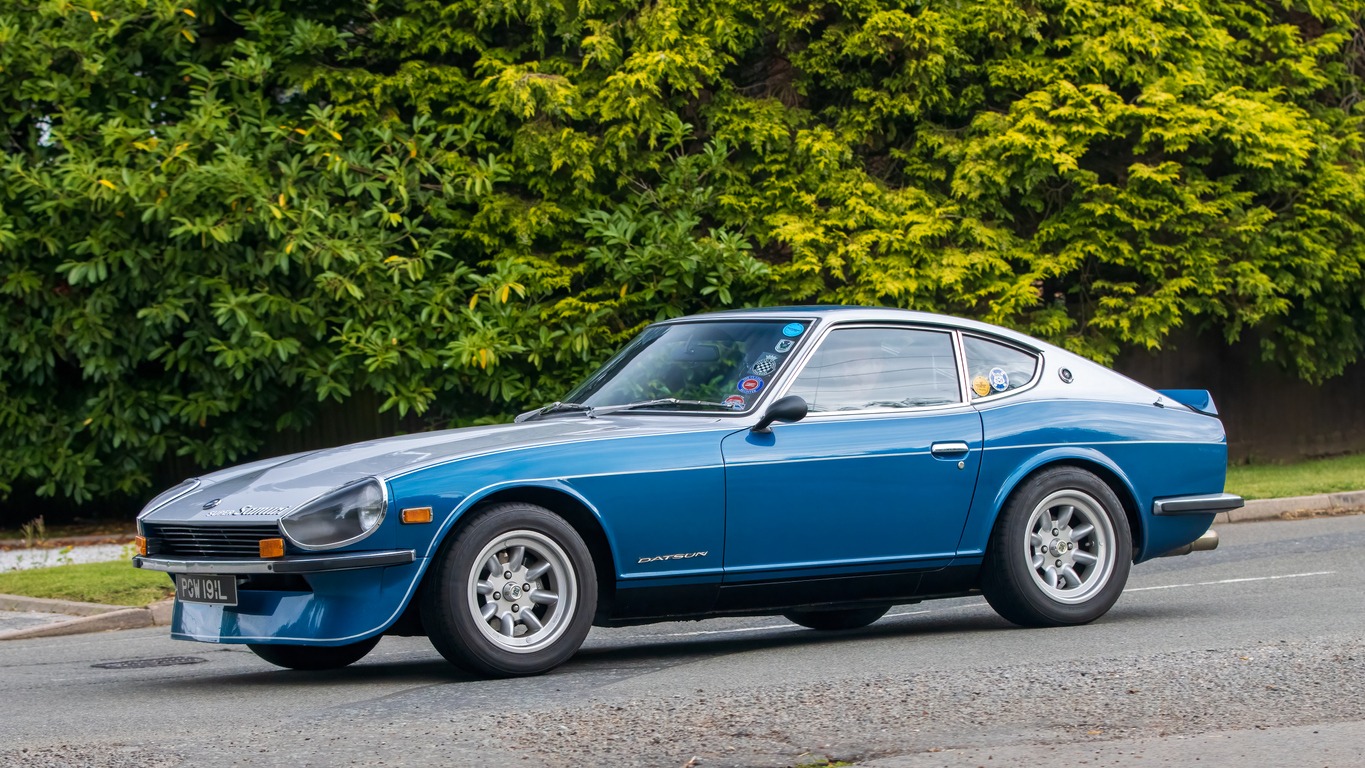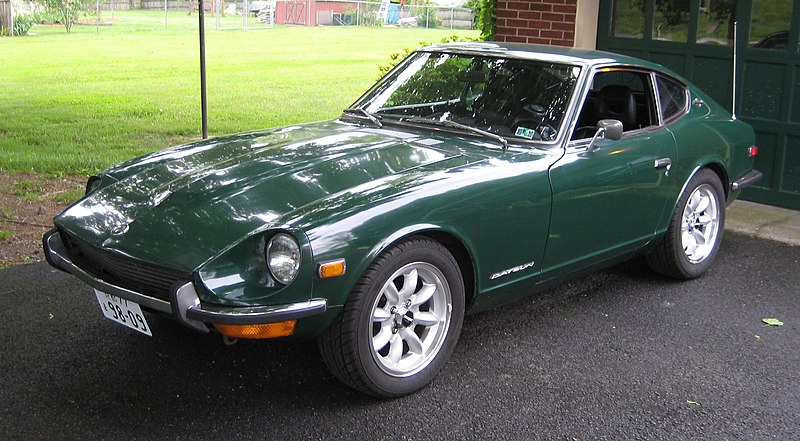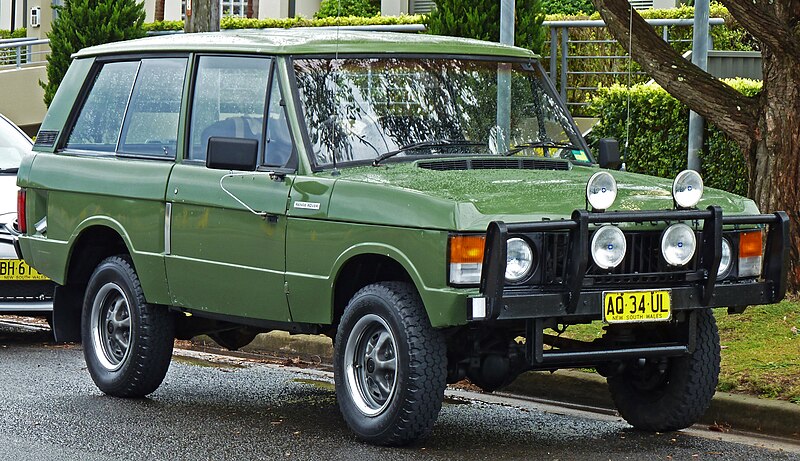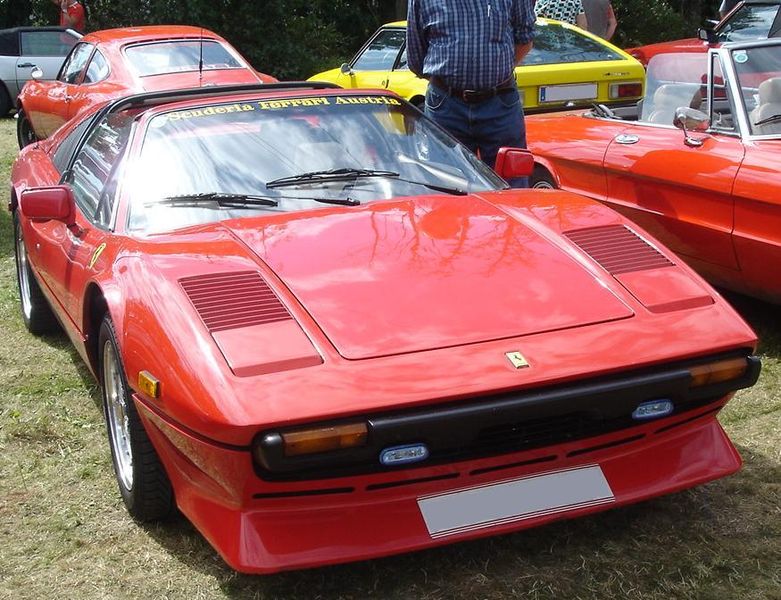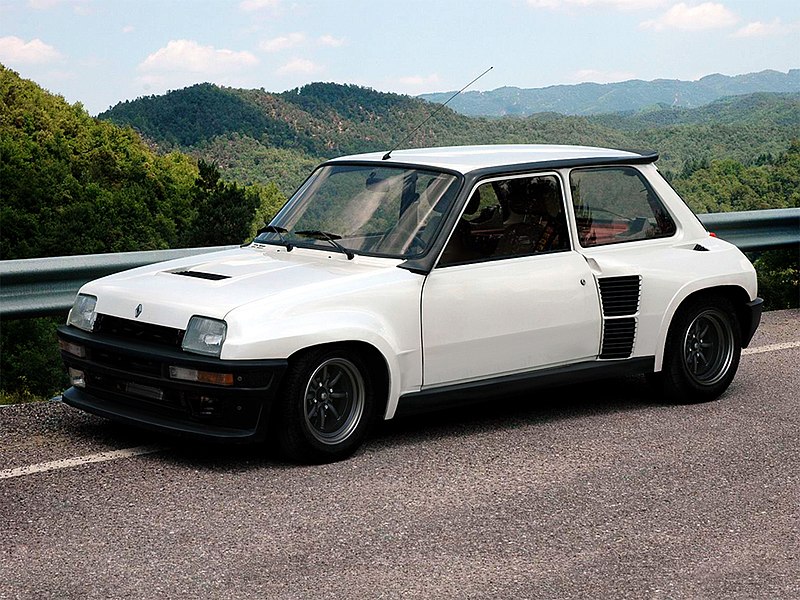The 70s was a fantastic era for cars. During this time, the automotive industry was bustling with growth, innovation, and financial success. Key players in this boom were British, European, and American car manufacturers, driving economic revivals and job creation and achieving massive sales domestically and abroad.
Though it was also a challenging time due to oil crises and changing environmental regulations, these changes paved the way for more environmentally friendly and fuel-efficient machines that we know well today.
This post will delve into the best cars made in the 1970s.
Chevrolet Camaro Z28 (1970-1973)
The early 70s saw the pinnacle of the American muscle car era, and the Chevrolet Camaro Z28 was at its forefront. Known for its powerful V8 engine and sleek, sporty design, the Z28 was a favorite among car enthusiasts.
The Camaro Z28 boasted a sporty, aggressive design that has become emblematic of the muscle car era. Its long hood, short rear deck, and wide stance were complemented by racing stripes and distinctive badging, creating a look that was both intimidating and alluring.
The Chevy Camaro was often regarded as one of the last true muscle cars before the oil crisis changed the automotive world. It’s also a sought-after car for both collectors and muscle car enthusiasts.
Datsun 240Z (1970-1973)
While other countries were focusing on their own models, Japan quietly introduced one of the most influential sports cars of the time – the Datsun 240Z. It was a hit, especially in the United States, where it outsold all European sports cars.
Arriving in the early ’70s, the 240Z made cars like the Jaguar E-Type and MGB/C look outdated. This attractive Datsun marked the beginning of a new era in sports cars. It offered a combination of affordability, reliability, and sports car performance that was unheard of at the time.
The 240Z’s sleek design and impressive 2.4-liter six-cylinder engine made it a hit both in the showroom and on the racetrack. It’s genuinely stunning from every angle. Its sleek curves and sporty silhouette are not only eye-catching but have also stood the test of time, influencing car designs for years to come.
Not only did it become the top-selling sports car of the ’70s, but its affordable price and excellent performance also made it a sensation. It was often compared to British sports cars and earned nicknames like ‘The Big Healey’ and the ‘Japanese E-Type.’
Range Rover (1970)
In 1970, the Range Rover arrived on the scene as the “car for all reasons.” It’s one of the things the British car industry got right in the 70s.
Drawing inspiration from American models like the Ford Bronco and Jeep Wagoneer, Rover saw an opportunity for a similar 4×4 in Britain. The first Range Rover, rolling out in 1970, was equipped with a V8 engine, four-wheel drive, and disc brakes all around.
Initially, its practical, easy-to-clean interior contrasted sharply with today’s luxurious Range Rover models. Yet, it introduced a new level of refinement to off-roading – it’s the car that transformed the SUV from being a farm vehicle into a stylish one you can bring to dinner parties. It also played a key role in establishing Land Rover as a brand.
Fast forward to the present, and the latest Range Rover iteration, only the fifth new generation in over 50 years, still echoes the original’s design principles. The original, now known as the ‘Classic’, remained in production for over 25 years and still holds a unique position in its class today.
Porsche 911 Carrera RS 2.7 (1973)
One of the most beautiful cars of the 70s, the Porsche 911 Carrera RS 2.7 is one of the most desirable of the classic 911 models. Its combination of power, speed, and style is noteworthy. But what truly sets it apart is how it pioneered the trend of special edition Porsches that are just that bit more stunning than the standard 911. This model took an already attractive car and elevated it to new heights of beauty.
The 2.7 RS (Rennsport) marked the revival of the famed Carrera name, first used in 1955. As the name implies, it featured a 2.7-liter engine robust enough to push this high-performance 911 to 155mph. Key features included broader rear arches, 7×15 Fuchs alloy wheels, and the iconic ‘ducktail’ spoiler. Side stripes were a stylish optional extra. While most models were produced with the luxurious Touring trim, 200 lucky buyers chose the more bare-bones Sport version.
Today, this Porsche model is a rare gem among collectors, and finding one in good shape could cost a pretty penny.
BMW 3 Series (1975)
The BMW 3 Series was the smallest and most comprehensively engineered car BMW has ever built. The early models, with their four-cylinder engines, weren’t the fastest, but they were among the best to drive. Because of its good reputation, the 3 series is BMW’s best-selling model, and the series is still in production today.
Beginning with the E21 in 1975, it was a significant step forward from its predecessor, the BMW 2002. Taking five years to develop, the first 3 Series emerged as a compact two-door sedan.
The 3 Series truly came into its own in 1977 with the introduction of the six-cylinder models. Now, the 3 Series had the power to match its impressive chassis, especially evident in the 323i, which boasted a fuel-injected 2.3-litre engine. The arrival of four-door versions, however, had to wait until the E30 model was launched.
Lamborghini Countach (1974-1990)
The Lamborghini Countach, first introduced in 1974, was nothing short of revolutionary. With its dramatic, angular design and powerful V12 engine, the Countach became the quintessential supercar of the 70s, symbolizing the excess and ambition of the era. Designed by Marcello Gandini, it was among the most powerful cars of its time.
Equipped with a V12 engine, the Countach could accelerate from 0 to 60 mph in just 6.8 seconds – a remarkable feat for the ’70s. But what really set it apart was its futuristic styling. Back then, its design was considered revolutionary.
With Countach, the company topped their Lamborghini Miura – the first true supercar. While Miura was famous, it had its flaws. The Countach’s setup, featuring a longitudinally mounted V12 and a transmission that’s placed between front seats, addressed many of Miura’s issues.
For the Countach’s design, Lamborghini brought back Marcello Gandini, the mastermind behind the Miura. After designing the curvaceous Miura, Gandini experimented with extreme wedge styling in the Lancia Stratos Zero and Alfa Romeo Carabo. It was these designs that influenced the new Lamborghini, with its ultra-low, sharply angled nose, trapezoidal shapes, scissor doors, and a sharply truncated tail. Countach and its other iterations are some of the most expensive luxury cars of the 1970s.
Mercedes-Benz S-Class (W116, 1972-1980)
Here’s another car that sets the standard for all others: the Mercedes S-Class. While its predecessor was informally known as the ‘Sonderklasse’ or ‘special class,’ it was the W116 generation, launched in 1972, that first officially bore the S-Class name. Development started in 1966, focusing on safety more than styling for the first time.
The S-Class introduced several safety innovations. It had more rounded styling to minimize pedestrian injuries, a padded dashboard and steering wheel, a standard first aid kit, and rain gutters for better visibility. Those distinctive ribbed taillights? They were designed to stay clean and visible.
Plus, the S-Class was among the early adopters of airbags and anti-lock braking systems. Engine options included inline-six and V8 units, with the latter category featuring the mighty M100 engine. This engine led to the creation of the 450 SEL 6.9, which was, at the time, the largest post-war engine in a Mercedes, making it the fastest and quickest European saloon for several years.
It could reach a top speed of 140mph, delivering speed in supreme comfort. The W116 S-Class solidified Mercedes-Benz’s reputation as a maker of premium, high-quality vehicles.
Volkswagen Golf (Mk1, 1974-1983)
While the Beetle is often seen as Volkswagen’s classic ‘people’s car,’ it’s the Golf that has really defined the brand for the last half-century. Volkswagen made a bold move from the rear-engined, air-cooled Beetles to the front-wheel drive, water-cooled Golf hatchback. This shift paid off handsomely, with the Golf finding over a million buyers in just three years.
Known for being affordable, practical, and enjoyable, the Golf might be the best value car ever. Designed by Giugiaro, this masterpiece led to more innovations, including the first Golf diesel and the iconic Golf GTI. While the GTI wasn’t the first hot hatch, it certainly popularized the concept of a fun, practical front-wheel drive hatchback. Many consider it the ultimate car for everyday use.
Alfa Romeo Alfasud (1971-1989)
The Alfasud may not be famed for its metal quality or rust resistance, but it certainly stands out as one of the 1970s’ most important cars. Released in 1972, the Alfasud was produced in a new Alfa Romeo factory near Naples, which inspired its name.
This was Alfa Romeo’s first completely new design in years, featuring front-wheel drive and a fresh range of flat-four engines. Despite being new to making front-wheel drive cars, Alfa Romeo set a new standard for how fun small cars could be to drive. It was one of the most popular compact cars in Europe during the 70s, known for bringing Italian flair to the mass market.
Jaguar XJ-S (1975)
When Jaguar introduced the XJ-S in 1975, it was stepping into big shoes as the successor to the E-Type – a tough act to follow, especially given the high expectations. The E-Type had transitioned from a sports car to a grand tourer during its lifespan, adopting a longer wheelbase, the new V12 engine, and an automatic gearbox option.
The XJ-S took the final evolution of the E-Type as its baseline and developed from there. It shared its chassis with the XJ saloon, and its initial design was by Malcolm Sayer, the aerodynamics expert behind the C, D, and E-types.
At its launch, the XJ-S was available only with Jaguar’s 5.3-litre V12 engine, a rarity at the time, shared only with the likes of Ferrari and Lamborghini. This gave the XJ-S an edge in performance over many of its rivals, although its fuel consumption was less than ideal during the fuel crisis era. It later expanded its range with a straight-six variant and a high-efficiency V12. The XJ-S proved its staying power, remaining in production until 1996 and becoming Jaguar’s longest-serving model.
Ferrari 308 GTB/GTS (1975)
The 1970s were a bit of a mixed bag for Ferrari, but the 308 GTB and GTS stood out as some of the decade’s finest models from Maranello. First seen at the 1975 Paris Motor Show, the 308 GTB was Ferrari’s first car with a fiberglass body. It later reverted to traditional steel and aluminum before introducing the convertible 308 GTS in 1977.
This car was a game-changer, as it broke away from the typical Ferrari V12 setup. Opting instead for a mid-engine V8, this quickly became the new standard for Ferrari. The bold move paid off as it became a top seller. The 308 blended classic Ferrari style with the era’s trends and wasn’t just about looks; it delivered solid performance and reliability.
Plus, Tom Selleck’s appearance in the Targa S version of Magnum P.I. might have done as much (or even more) for Ferrari’s sales as its racing heritage.
Renault 5 (1972-1985)
A significant player in the small car market, Renault 5 offered practicality and efficiency in a distinctive package. The Renault 5’s massive success is clear from the fact that an incredible 5.47 million of these first-generation cars were produced in just five years. It took a lot of inspiration from the Renault 4 yet offered the comfort and practicality of the Renault 16. Despite its compact size, the Renault 5 was surprisingly roomy and functional.
But this model wasn’t just about practicality – it had some exciting versions, too. The hot Alpine model (known as Gordini in the UK) and the even more powerful 5 Turbo stood out. The 5 Turbo was a special model designed for racing regulations, boasting a mid-mounted 1.4-litre turbocharged engine. In 1984, the original R5 made way for the ‘Superfive,’ redesigned by Marcello Gandini.
Citroen SM (1970)
The Citroen SM raises a serious question: might it be the coolest car ever made? With its aerodynamic teardrop shape, the SM had an impressive drag coefficient of 0.26, making it the fastest front-wheel drive car of its time. It even earned the title of “Motor Trend’s Car of the Year,” a first for a non-American model.
It boasted the DS’s hydropneumatic suspension and cornering headlights, plus it added speed-sensitive power steering, all-around disc brakes with automatic balance adjustment, rain-sensitive wipers, and even the option for carbon fiber reinforced wheels.
However, the SM faced challenges in the US market, where it couldn’t accommodate the mandatory 5mph bumpers. In Europe, the need for both Citroen and Maserati specialists for servicing made it a hard sell. Despite its innovative features and stunning design, the SM wasn’t a commercial hit, with just under 13,000 units produced. It was a car ahead of its time.
Dodge Challenger (1970)
Widely known for its role in the movie Vanishing Point with Barry Newman, the Dodge Challenger was Chrysler’s answer to the pony car trend sparked by the Ford Mustang. These were compact, powerful muscle cars with a plethora of options. This is exemplified by the Challenger, which came with almost every Chrysler engine available, including the famous Hemi.
Built on the same Chrysler E platform as the Plymouth Barracuda, the Challenger aimed to outdo the Mustang in both performance and luxury, catering to the growing affluence of young American buyers. The Challenger R/T stood at the top, boasting 431 horsepower (317kW) from its 7.0-litre Hemi engine.
However, its production run was short-lived, lasting only four years due to the market’s downturn following the 1973 oil crisis. You can learn more about the three generations of Dodge Challenger here. Today, this makes the Challenger one of the most sought-after collectible cars from that era.
Conclusion
The 1970s were a decade of contrasts in the automotive world. From the last roar of American muscle cars to the rise of Japanese engineering and the refinement of European luxury and sports cars, this era showed a lot of significant milestones in the car world, offering the masses a wide range of options. The cars of the 1970s reflected a world in transition, adapting to new challenges while pushing the boundaries of what cars could be. These vehicles not only defined their era but also laid the groundwork for future innovations.

